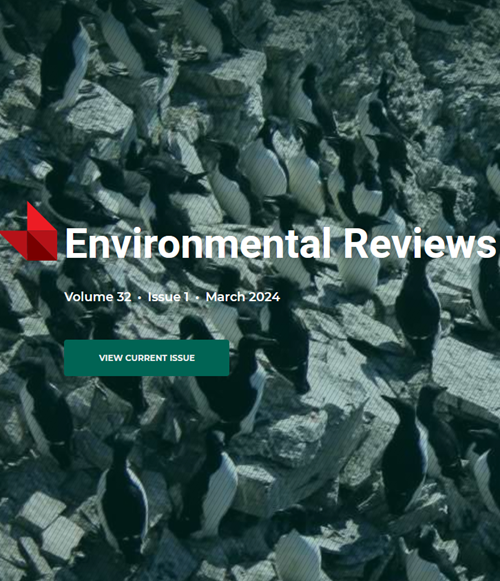Sources of rare earth elements in the environment and their impact on living organisms
IF 5.1
3区 环境科学与生态学
Q2 ENVIRONMENTAL SCIENCES
引用次数: 0
Abstract
This review paper aims at understanding natural and anthropogenic sources of rare earth elements (REEs) in the environment, their mechanisms of action, individual toxicity of REEs and individual toxicity of their mixtures, including with other toxicants. We also summarized the scientific knowledge on REE bioaccumulation by plants, animals and fungi. The purpose of the work was to analyze published scientific information and identify unsolved scientific issues in the selected areas. At present, both natural positive geochemical anomalies of REEs and "spots" of anthropogenic origin are discovered. There is a relationship between natural and anthropogenic sources of REEs in the environment. Increasing REE mining leads to the exposure of rock layers rich in target elements, which are then leached from natural and waste rocks. As a result, the total content of REEs in soils of their extraction areas reaches 2.3 µg/kg, and in the snow of cities it is found from 0.411 µg/kg to 1.463 µg/kg, which is comparable with natural anomalies of elements. Most often such levels of REE accumulation are not dangerous for biota. REEs, like many trace elements, have an essential effect in low concentrations and have harmful effects only when the dose is increased. However, stimulation effects proven for agricultural plants and animals in the natural environment can influence the change in population and community structures. The effects of REE compounds have many uncertainties under the conditions of their joint action with each other and with other substances containing biogenic or potentially toxic elements. The article provides examples of additive, synergistic and antagonistic action of a mixture of elements. Further, it is shown that the bioaccumulation of REEs is comparable to the accumulation of heavy metals in living organisms. Data on the transfer of REEs along trophic chains are single and contradictory. Thus, REEs contribute to the toxic load on living organisms. The main “blank spots” in knowledge about the action of REEs that require further research are identification of the most sensitive and vulnerable species, establishment of long-term effects, and clarification of the joint action of REEs with other substances.环境中稀土元素的来源及其对生物体的影响
本文旨在了解环境中稀土元素(ree)的自然和人为来源、作用机制、个体毒性及其混合物的个体毒性,包括与其他毒物的毒性。总结了植物、动物和真菌对稀土元素生物富集的科学认识。这项工作的目的是分析已发表的科学信息,并在选定的领域确定未解决的科学问题。目前发现的稀土元素地球化学正异常既有天然的,也有人为成因的“斑”。环境中稀土元素的自然来源和人为来源之间存在一定的关系。增加稀土开采导致富目标元素岩层暴露,然后从天然和废石中浸出。结果表明,提取区土壤中稀土元素总含量达到2.3µg/kg,城市积雪中稀土元素总含量在0.411µg/kg ~ 1.463µg/kg之间,与自然异常水平相当。大多数情况下,这种水平的稀土元素积累对生物群没有危险。像许多微量元素一样,稀土元素在低浓度下具有基本作用,只有在剂量增加时才会产生有害影响。然而,在自然环境中对农业植物和动物已证实的刺激效应可以影响种群和群落结构的变化。稀土化合物在相互作用和与其他含有生物源或潜在有毒元素的物质共同作用的条件下,其作用具有许多不确定性。本文列举了元素混合物的加性、增效和拮抗作用的实例。此外,研究表明,稀土元素的生物积累与重金属在生物体内的积累相当。稀土元素沿营养链转移的数据是单一和矛盾的。因此,稀土元素增加了生物体的毒性负荷。稀土元素作用认识的主要“空白点”是确定最敏感和最脆弱的物种,建立长期效应,澄清稀土元素与其他物质的联合作用。
本文章由计算机程序翻译,如有差异,请以英文原文为准。
求助全文
约1分钟内获得全文
求助全文
来源期刊

Environmental Reviews
环境科学-环境科学
自引率
3.50%
发文量
45
期刊介绍:
Published since 1993, Environmental Reviews is a quarterly journal that presents authoritative literature reviews on a wide range of environmental science and associated environmental studies topics, with emphasis on the effects on and response of both natural and manmade ecosystems to anthropogenic stress. The authorship and scope are international, with critical literature reviews submitted and invited on such topics as sustainability, water supply management, climate change, harvesting impacts, acid rain, pesticide use, lake acidification, air and marine pollution, oil and gas development, biological control, food chain biomagnification, rehabilitation of polluted aquatic systems, erosion, forestry, bio-indicators of environmental stress, conservation of biodiversity, and many other environmental issues.
 求助内容:
求助内容: 应助结果提醒方式:
应助结果提醒方式:


